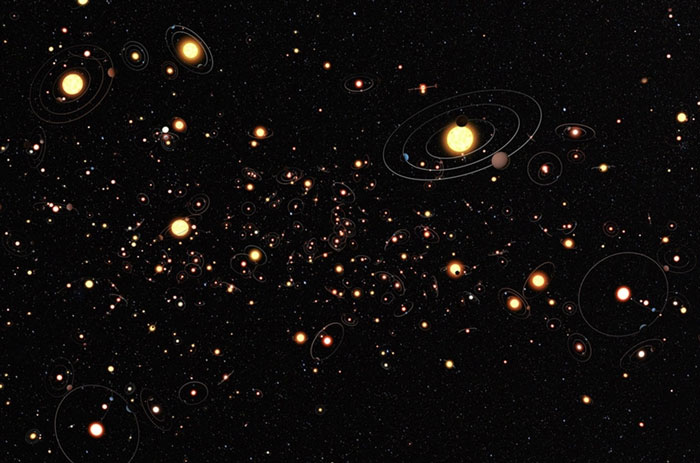100 billion planets in the Milky Way
Our Milky Way Range has at least 100 billion planets according to a detailed statistical study based on the discovery of three extrasolar planets thanks to microlensing.
Kailash Sahu, an international team member from the Space Telescope Science Institute in Baltimore, Maryland, reports there is at least one planet on average per star in the Milky Way. This means the possibility of at least 1,500 planets within 50 years of light from the earth.
This result was obtained through observation of the six-year PLANET cooperation program (Abnormal phenomena exploration network) co-founded by Sahu in 1995. The study concludes the number of similar planets more Earth than the number of bulky-sized planets like Jupiter. This finding is based on correcting the planetary size function, showing that the number of planets increases at smaller sizes. The survey also estimated that there are about 10 billion Earth-like planets in the Milky Way.
The group's conclusion is based on microscopic search techniques. The technique takes advantage of the random movement of stars, which is generally very small and hard to see. If a star moves right in front of another star, its gravity will bend the star's light further. This means that the star is near like a giant lens amplifying the star's light further. The group of planets around the near star adds light to the distant star, which is the light that reveals planets, or they are too dim to see with a telescope.

The bigger the mass of the nearby star, the longer the micrographic process is. Usually this process lasts about a month, however the light supplementing planets usually only last a few hours to a few days. Astronomers use microscopic techniques to determine planet size. However, this method does not clarify their construction.
Different from famous planet detection techniques, which measure planetary ball when they cross before transit or measure the fluctuation of a star due to the planet's gravity (radial speed) and metering techniques), the gravitational imaging technique is quite objective in choosing host stars.
Other techniques work well when searching for planets near stars and having short orbiting trajectories. But microscopic technology has the ability to detect planets at a distance from the star, such as Saturn, or near, like Mercury. This technique also allows finding small planets like Mercury.
Extensive surveys such as gravitational optical imaging experiments (OGLE) or Micro-observations in Astrophysics (MOA) cover millions of stars every night to identify or warn micro-stars picture as soon as possible. Later coordination, such as PLANET's collaborative program, monitors regularly selected stars for 24 hours, using a telescope system around the world.
Every forty phenomena are carefully monitored, then three of them show evidence of extrasolarity. Through statistical analysis, the team found that 1/6 of the stars have planets the size of Jupiter. More than that, half of the stars have planets about the size of Neptune and two-thirds have Earth-sized planets. Thus, the number of small-sized planets outperforms that of larger planets.
"Statistically, this means that every star in the Milky Way has at least one planet, or more," Sahu said.
'Results from the three main techniques for finding planets quickly converge into a common result: Not only planets are common in the Milky Way series, but also smaller numbers of planets than large-sized planets , " Stephen Kane said from NASA's Institute of Extracurricular Science at California Institute of Technology in Pasadena. " This is optimistic news for planetary search surveys " .
These results are not related to the gravitational lens survey program led by Takahiro Sumi of Osaka University, which estimates there are hundreds of billions of planets with orbits larger than Saturn, or are free floating in the Milky Way.
- 100 billion planets reside in the Milky Way
- There are at least 50 billion planets in the Milky Way
- The Milky Way has billions of planets close to Earth
- Two more decades will meet
- Mysterious planets have a 'mother' from another galaxy
- The mass of the Milky Way
- Enjoy the pure Milky Way season
- There are billions of planets like Earth
- Close up of the Milky Way's
- Discovering cosmic dust clusters inside the Milky Way galaxy
- The Milky Way might contain 10 billion Earth-like planets
- Photo of the largest Milky Way galaxy ever
 Van Allen's belt and evidence that the Apollo 11 mission to the Moon was myth
Van Allen's belt and evidence that the Apollo 11 mission to the Moon was myth The levels of civilization in the universe (Kardashev scale)
The levels of civilization in the universe (Kardashev scale) Today Mars, the sun and the Earth are aligned
Today Mars, the sun and the Earth are aligned The Amazon owner announced a secret plan to build a space base for thousands of people
The Amazon owner announced a secret plan to build a space base for thousands of people